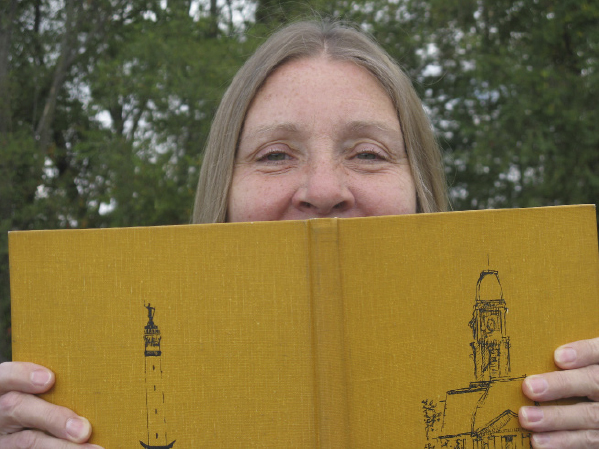Hamilton County’s Polar Bear

A few years ago, while thumbing through the Noblesville Daily Ledger’s 1992 pictorial history of Hamilton County, I was startled to run across a rather cheeky — and I mean that in every sense of the word — photo of local auctioneer, Col. R. C. (Roland C.) Foland.
(He wasn’t in the military. “Colonel” is an honorary title adopted by some auctioneers.)
According to the caption, Foland was about to dive into Stony Creek on New Year’s Day, 1926. That he was doing so without the benefit of swimming trunks is obvious. Fortunately, the angle of the shot and a towel keep the image from verging into R-rated territory.
Although the caption is wrong about the year, the “New Year’s Day” part is probably correct. You see, Col. Foland was a member of the local Polar Bear Club. In fact, he usually accounted for the club’s entire membership.
But, I’ll get to that in a minute.
An article in the February 13, 1934 Ledger fleshes out (sorry, couldn’t resist!) the story behind the “unusual sport.”
The Colonel’s passion for swimming in frigid water began in 1932 when his business, the Fo-Land Auction Company, went to northern Michigan to sell resort lots on Big Bear Lake.
Although it was only September, the weather was already cold enough for ice to begin forming on the lake.
One morning, Foland and several co-workers ignored the frosty temperatures to go swimming. The group continued their early morning dips while they were in Michigan, but by the time they left, most of them had had their fill of splashing about in icy water.
Foland, however, enjoyed the experience so much, he kept it up after he returned to Indiana.
Swimming in Stony Creek became a regular part of his winter mornings — whenever his auctioneering duties didn’t take him away from home, that is — even though he sometimes had to chop a hole in the ice first.
In his early 50s when he began the practice, he intended to be around to cry an auction at the age of 100 and firmly believed his polar plunges would keep him healthy enough to reach that goal.
He maintained that the exposure to cold water helped to build up resistance to colds, flu and other winter maladies; that it developed courage, will power and self control; and that it promoted cleanliness and general good health.
Anyone — male OR female — was invited to join Foland’s “Grin and Bear It Polar Club.”
The group’s annual meetings were held on January 1 of each year at Stony Creek’s “Old Indian Hole” (“where the ‘sissies’ swim in dog days.”) Members were required to swim outdoors at least three times during January “with nothing on save and except a bathing suit.”
It’s not clear if Foland eventually took to wearing a suit, or if he continued to swim in “as many clothes as Sally Rand wears on the stage.” (Sally Rand was a burlesque star known for dancing nude, or at least apparently nude, with strategically placed fans and bubbles.)
The public was welcome to observe the Polar Bear Club’s activities, although a free will offering of at least 25 cents — five cents for children — in “COLD cash” was requested. (There was no charge if you showed up in a swimsuit.)
Despite his enthusiasm, Foland’s efforts to recruit new members met with little success. While a few spectators showed up from time to time, the Ledger noted in 1950 that only four hardy souls had ever actually joined him in the water.
Undaunted, Col. Foland continued his icy baths at least until 1957 when he was 75. He passed away six years later in 1963 at the age of 82.
Paula Dunn’s From Time to Thyme column appears on Wednesdays in The Times. Contact her at younggarden- erfriend@gmail.com
